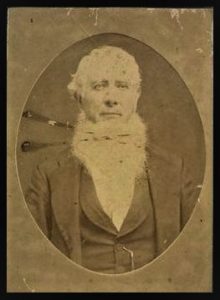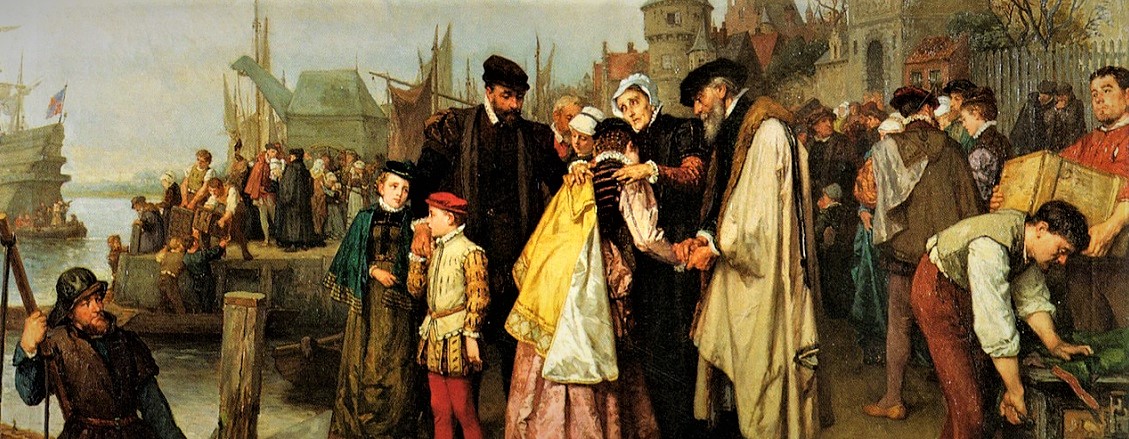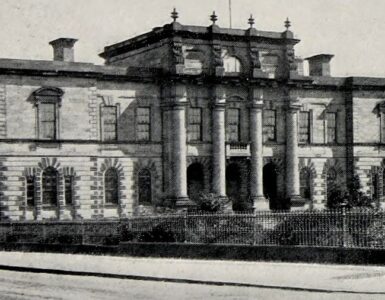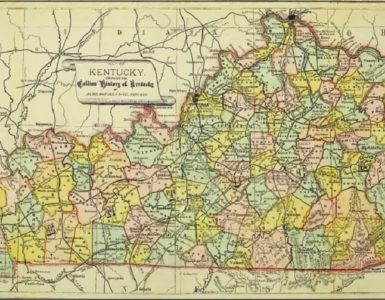 James Finley was born in Abbeville County, South Carolina, June 30, 1808, to Stephen and Sarah (Pettigrew) Gibert. The family heritage was French Reformed, more commonly known as Huguenot. The great-granduncle of James was Pastor Jean Luis Gibert, who was important for the New Bordeaux community in the Abbeville region. The Huguenots had been driven from France by persecution and they settled in communities such as New Bordeaux in South Carolina, as well as in North Carolina, and the city of New York. A perspective on the early influences of Huguenots in the state was provided by Englishman John Lawson. He arrived in Charles Town (Charleston) to explore Carolina, which would become South and North Carolinas later in the century. The published journal of his travels, A New Voyage to Carolina, 1709, includes a summary of the church situation at the time in Charleston. There was
James Finley was born in Abbeville County, South Carolina, June 30, 1808, to Stephen and Sarah (Pettigrew) Gibert. The family heritage was French Reformed, more commonly known as Huguenot. The great-granduncle of James was Pastor Jean Luis Gibert, who was important for the New Bordeaux community in the Abbeville region. The Huguenots had been driven from France by persecution and they settled in communities such as New Bordeaux in South Carolina, as well as in North Carolina, and the city of New York. A perspective on the early influences of Huguenots in the state was provided by Englishman John Lawson. He arrived in Charles Town (Charleston) to explore Carolina, which would become South and North Carolinas later in the century. The published journal of his travels, A New Voyage to Carolina, 1709, includes a summary of the church situation at the time in Charleston. There was
a French Church … of the Reformed Religion, and several Meeting-houses for dissenting Congregations, who all enjoy at this Day an entire Liberty of their Worship; the Constitution of this Government, allowing all Parties of well-meaning Christians to enjoy a free Toleration, and possess the same Privileges, so long as they appear to behave themselves peaceably and well: It being the Lords Proprietors Intent, that the Inhabitants of Carolina should be as free from Oppression, as any in the Universe; which doubtless they will, if their own Differences amongst themselves do not occasion the contrary.
The French Church mentioned by Lawson was founded 1686 and still exists in Charleston; it is the only active Huguenot Church today. As he travelled, he found Huguenots in a settlement along the Santee River.
The French being a temperate industrious People, some of them bringing very little of Effects [possessions from France], yet by their Endeavors and mutual Assistance amongst themselves, (which is highly to be commended) have … managed their Talent to the best Advantage. ‘Tis admirable to see what Time and Industry will (with God’s Blessing) effect.
As Lawson continued exploring he found settlements on the Trent River in North Carolina where Huguenots were thriving.
They are much taken with the Pleasantness of that Country, and, indeed, are a very industrious People. At present, they make very good Linen-Cloth and Thread, and are very well vers’d in cultivating Hemp and Flax, of both which they raise very considerable Quantities; and design to try an Essay of the Grape, for making of Wine.
Stephen and Sarah’s heritage of French Reformed doctrine and industry provided by their ancestors would be instilled in their son.
James graduated the University of Georgia, 1834. In the fall he entered Columbia Theological Seminary to graduate in 1837 with J. L Bartlett, Edwin Cater, James H. Saye, D. McNeill Turner, and John Winn. He was licensed by the Presbytery of South Carolina at Bethany Church in Laurens County, March 25, 1837, having delivered a sermon from Philippians 2:21, “For all seek their own, not the things which are Jesus Christ’s.” The same presbytery, November 24, 1838, ordained and installed him pastor of Lebanon Church, half time. The church is located about six miles southwest of Abbeville. As the years passed, the French Reformed churches closed or combined with Presbyterian ones such as was the case with the Lebanon Church. The Huguenot influence on Lebanon is seen in the abundance of French surnamed deceased members including forty-nine Giberts interred in the cemetery. For the other half of Gibert’s ministry he led worship at Liberty Church in the New Bordeaux settlement 1837 to 1842, Hopewell Church 1847 to 1851, and Bethia Church 1851 to 1875, along with short tenures at Willington and Lodimont. He did missionary work at the local Poor House one afternoon each month for twenty-seven years. Pastor Gibert continued at Lebanon until his pastoral relation was dissolved by death nearly forty-five years later the Sabbath morning of June 24, 1883. His last sermon had been delivered Sunday, March 18, from Psalms 34:8, “Oh taste and see that the Lord is good: blessed is the man that trusts in him,” which is a fitting text to close such a lengthy pastorate.
He had written a correspondent the year before his death regarding his ministry—
I am still preaching at Lebanon, the church over which I was first ordained and installed pastor, November 24th, 1838, a little more than forty years ago. The membership of the church is about the same in number that it was when I was ordained. The number has at times been near one hundred and come down by deaths and removals. I am not certain that we have more than one member now that we had when I was ordained. Almost all the congregation is young persons; almost all the youth are communicants.
The Synod of South Carolina’s memorial provides assessment of his ministry by his fellow presbyters.
His preaching was doctrinal, with a due admixture of practical application. His sermons were plain and simple, yet logical and argumentative. He has left behind him a congregation well instructed in the doctrines of the Presbyterian Church, and remarkable for its general morality and law-abiding spirit.
In an age when growth is commonly at the top of the list for church ministry, Gibert’s years show a concern for growth in sanctification faithful to Scripture and the Westminster Standards. Church growth is a good thing, but it is carried out with the simple method exhibited in Gibert’s ministry. Nothing fancy, just the necessities. Also note the closing comment of his quote above that shows the importance of covenant ministry as his congregation transitioned to one made up of younger members.
James had married Elizabeth A. Baskin, October 1, 1839, and she survived him along with five daughters, a son, and many grandchildren. His article, “Election,” was published in The Southern Presbyterian Review, 31.1 (January 1880), 63-70; the issue along with the rest of the available run is available at Log College Press.
Barry Waugh
Notes—The header is Jan Antoon Neuhuys’s, Emigration of the Huguenots, 1566, from Wikimedia Commons. The portrait is from Find a Grave as obtained from Reformed Theological Seminary Library (campus not mentioned). Note the spelling of Pettigrew varies including Petigrew and Petigru. The version of John Lawson’s A New Voyage to Carolina; Containing the Exact Description and Natural History of that Country: Together with the Present State thereof. And a Journal of a Thousand Miles, Travel’d thro’ several Nations and Indians. Giving a particular Account of their Customs, Manners, &c, London, 1709, used is “The Project Gutenberg EBook of A New Voyage to Carolina, by John Lawson” found at https://www.gutenberg.org. The article “The Evolution of Charleston’s Name,” by Nic Butler on the Charleston County Public Library site supplies information about the use of Charles Town and Charleston. The biographical information in Memorial Volume of the Semi-Centennial of the Theological Seminary at Columbia, South Carolina, 1884, and the memorial for Gibert in Minutes of the Synod of South Carolina at its Annual Sessions at Anderson, S.C., October 24, 25, 26, & 27, 1883, are similar, but the former was written by James L. Martin who drew it from the latter; the Synod’s memorial is more detailed. Also used was E. C. Scott’s Ministerial Directory of The Presbyterian Church, U.S., 1942.





